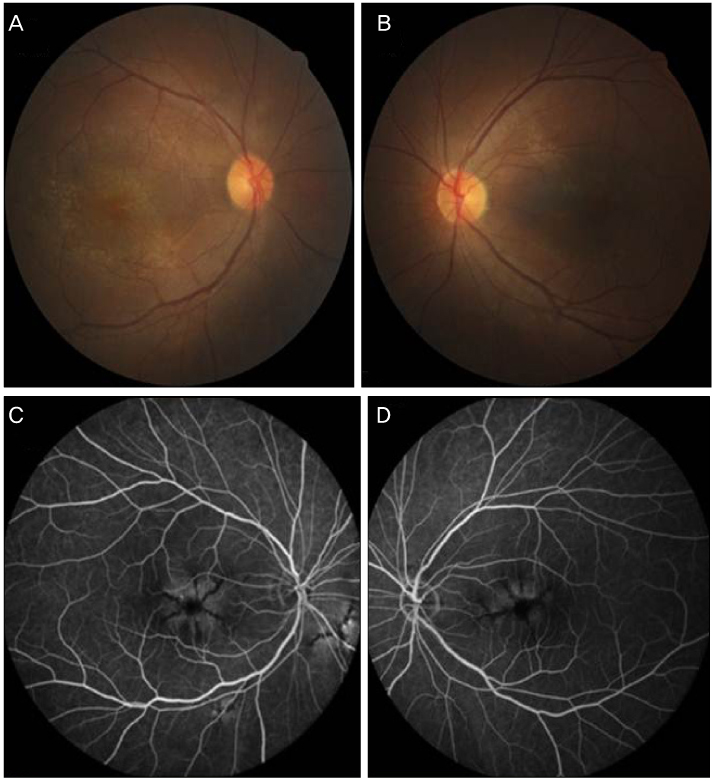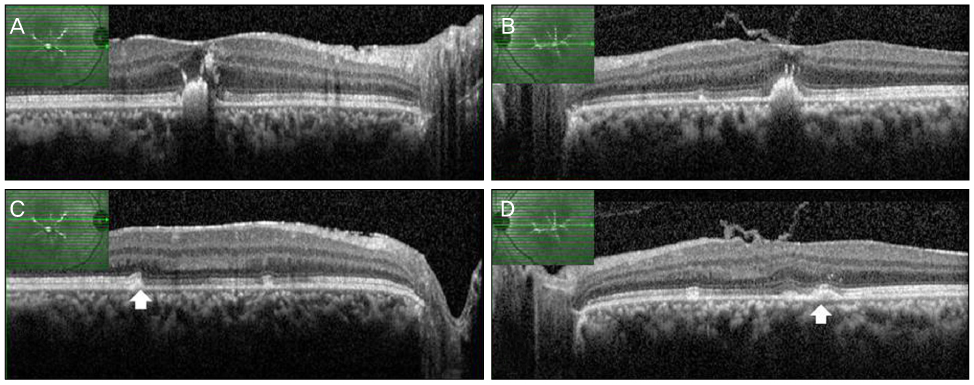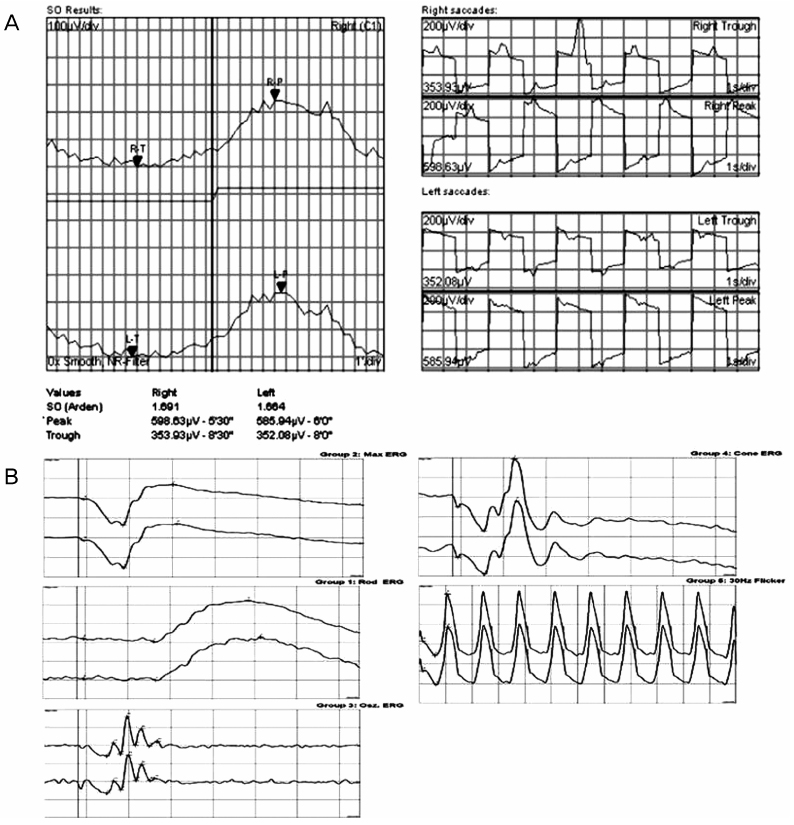J Korean Ophthalmol Soc.
2012 Nov;53(11):1699-1703.
Spectral Domain Optical Coherence Tomography Findings of Butterfly Shaped Pigment Dystrophy
- Affiliations
-
- 1Nune Eye Hospital, Daegu, Korea. kimsy49@gmail.com
Abstract
- PURPOSE
The butterfly-shaped pigment dystrophy is an extremely rare autosomal dominant retinal disorder. The authors present a case of butterfly-shaped pigment dsytrophy not reported previously in Korea.
CASE SUMMARY
A 45-year-old man had bilateral blurred vision for 2 years. His visual acuity was 0.2 in the right eye, and 0.3 in the left and was uncorrected. Funduscopically, yellow pigment deposits were present at the level of retinal pigment epithelium (RPE) in the central macula of both eyes. Fluorescein angiography (FA) revealed a central, dark, butterfly-shaped lesion surrounded by a region of hyperfluorescence, Spectral domain optical coherence tomography (OCT) showed thick elevation of the RPE with hyperreflectivity and disruption of the inner and outer segment (IS/OS) interface of the photoreceptors. The patient had normal color vision, visual field and electroretinograms and reduced electrooculograms.
CONCLUSIONS
In general, butterfly-shaped pigment dystrophy is known to have good visual prognosis. However, in some cases the disease can be a chronic progressive disorder with secondary involvement of the photoreceptors, as exemplified this patient. The authors anticipate more detail regarding the natural course of this disease will be obtained through spectral domain OCT.
MeSH Terms
Figure
Reference
-
1. Deutman AF, van Blommestein JD, Henkes HE, et al. Butterfly-shaped pigment dystrophy of the fovea. Arch Ophthalmol. 1970. 83:558–569.2. Tuppurainen K, Mäntyjärvi M. The importance of fluorescein angiography in diagnosing pattern dystrophies of the retinal pigment epithelium. Doc Ophthalmol. 1994. 87:233–243.3. Zhang K, Garibaldi DC, Li Y, et al. Butterfly-shaped pattern dystrophy: a genetic, clinical, and histopathological report. Arch Ophthalmol. 2002. 120:485–490.4. Zhang K, Nguyen TH, Crandall A, Donoso LA. Genetic and molecular studies of macular dystrophies: recent developments. Surv Ophthalmol. 1995. 40:51–61.5. van Lith-Verhoeven JJ, Cremers FP, van den Helm B, et al. Genetic heterogeneity of butterfly-shaped pigment dystrophy of the fovea. Mol Vis. 2003. 9:138–143.6. Isaac DL, Santos RA, Avila M. [Butterfly-shaped pattern dystrophy: case report]. Arq Bras Oftalmol. 2007. 70:129–132.
- Full Text Links
- Actions
-
Cited
- CITED
-
- Close
- Share
- Similar articles
-
- Fundus Autofluorescence, Fluorescein Angiography and Spectral Domain Optical Coherence Tomography Findings of Retinal Astrocytic Hamartomas in Tuberous Sclerosis
- Three Cases of Outer Retinal Tubulation in Bietti's Crystalline Dystrophy
- Short-Term Clinical Observation of Acute Retinal Pigment Epitheliitis Using Spectral-Domain Optical Coherence Tomography
- Sjögren's Reticular Retinal Dystrophy
- Choroidal Thickness at the Outside of Fovea in Diabetic Retinopathy Using Spectral-Domain Optical Coherence Tomography




